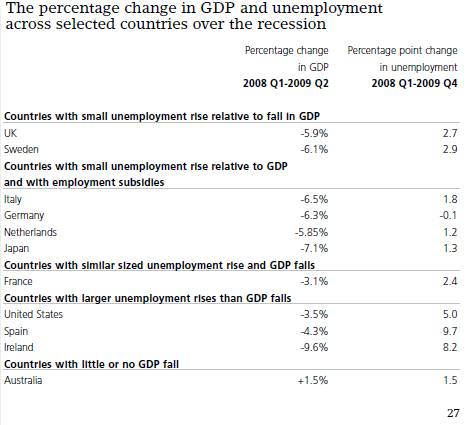Dismissal and redundancy/lay-off
Although the HRM department is associated mostly with recruitment and training, it has an important function in the termination of employment. Firms will 'let employees go' for a number of reasons:
- Dismissal ('firing' or termination)
- Redundancy (lay-off/retrenchment)
- Resignation
- Retirement
It is important that you are able to distinguish between theses terms - particularly between dismissal and redundancy.
1. Dismissal
In most countries there are limited grounds for firing an employee. Essentially the firm must show the employee is:
- Negligent or incompetent in carrying out their duties
- Guilty of repeated acts of misconduct each worthy of an official warning, such as persistent lateness, unexplained absence, unacceptable behaviour to others and other breaches of contract.
- Guilty of gross misconduct justifying immediate dismissal. The employee may have committed an illegal act, such as theft of company property or an assault on another employee or customer. The firm will then want to dismiss them with immediate effect.
- Unable to perform the job he was hired to do. For instance, the employee may have lost his driving licence or be imprisoned.
Organisations will have to ensure that they follow all legal requirements before dismissing an employee or they may find that they are accused of Unfair Dismissal. In many countries, the employee can access an industrial tribunal - an independent body that will look at the arguments of both the employer and employee and judge whether the dismissal, or redundancy, was fair. If the employee can prove unfair dismissal, they will be entitled to either their job back, or some financial compensation.
2. Redundancy
The firm may need, or wish, to reduce their workforce, perhaps because of reduced demand or as a cost-saving measure. In this case a job function is no longer required and the firm is not legally allowed to replace a person with someone else doing the same job - it is the job that is 'redundant', not the person.
When laying-off staff, a firm has two main methods:
- To ask for voluntary redundancies. Organisations will often offer excellent incentives to staff willing to leave the firm. This could be in the form of immediate financial compensations and/or in the form of enhanced benefits such as an early or larger pension.
- To impose compulsory redundancies. The organisation selects those employees/jobs that can be made redundant based on a number of criteria such as length of service or ability.
The employee will generally have legal protection. If made redundant they should be entitled to redundancy pay. The amount is likely to depend on how long they have served and their level of pay.
There are many terms used to describe the reduction in the number of staff in an organisation. Be aware of the meaning, similarities and differences between the following terms:
Redundancy, downsizing, delayering, rationalising, re-engineering
It is almost certain that unemployment levels in an economy will rise during a recession unless government intervenes to create substantial public sector jobs. The size of any increase will depend on many factors such as the flexibility of the workforce in accepting lower wages and/or longer working hours. The table below shows the percentage change in unemployment levels across selected countries during the recent recession. For example, France experienced a 3.1% fall in GDP, but unemployment only rose 2.4%.

Source: CentrePiece Summer 2010

Employment Tasks
- Investigate the policies that Italy, Germany, Netherlands and Japan have pursued to protect employment and to minimise the effects of recession
- For the country where you are living, conduct a web search to determine the legal protection that exists for employees. Try to establish the following:
- On what basis can an employee be dismissed?
- Do employees have access to some sort of industrial tribunal? If so, under what terms is access allowed?
- What are the levels of redundancy pay?
- Do all employees have access to trade unions? If so, what sort of support can the trade union provide in the event of dismissal or redundancy?
